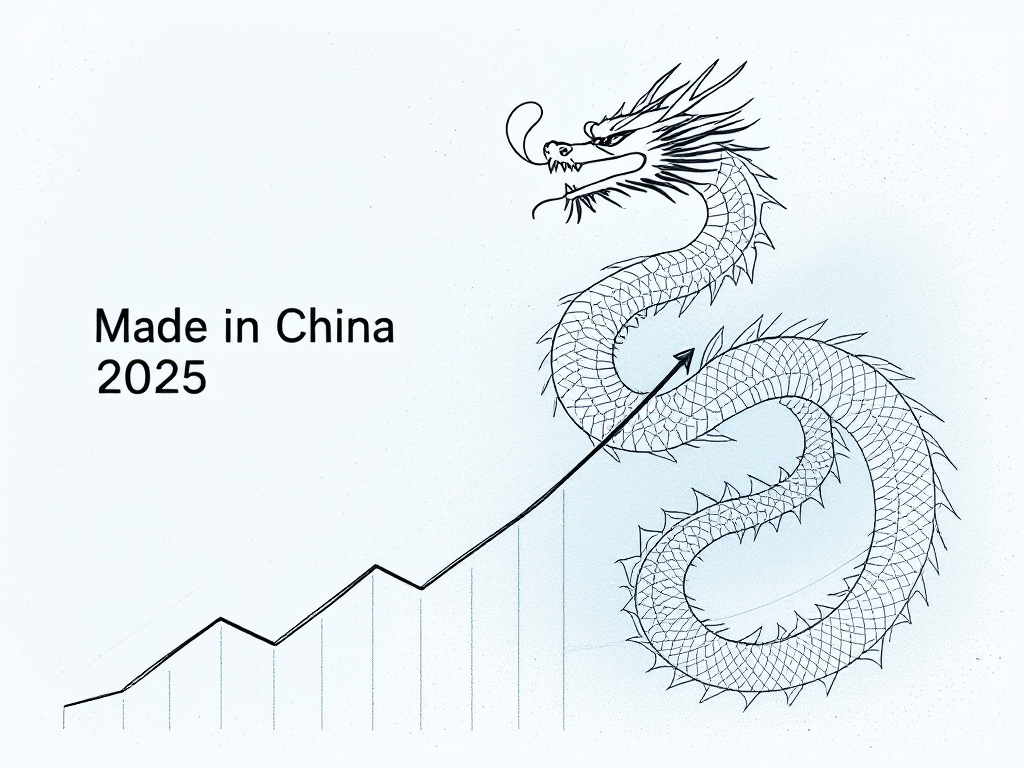Introduction: A New Era of Global Manufacturing
Imagine a multinational electronics company, renowned for its cutting-edge devices, suddenly grappling with unforeseen challenges. The reason? A seismic shift in global manufacturing trends, largely driven by China’s ambitious strategic plan, Made in China 2025. As the company braces for this new era, it finds itself navigating complex supply chain dynamics, competitive pressures, and regulatory landscapes. In such a rapidly evolving environment, tools like PayInOne become crucial allies in managing these transitions seamlessly.
The Made in China 2025 initiative, launched by the Chinese government, aims to transform China from a “world factory” into a global leader in high-tech industries. This strategic blueprint not only impacts domestic policies but also sends ripples across global markets, affecting businesses worldwide. Understanding and adapting to this plan is essential for any company involved in international operations.
Understanding Made in China 2025
Made in China 2025 is an ambitious roadmap designed to boost China’s manufacturing sector. The initiative targets high-tech industries, aspiring to position China as a leader in these fields over the next decade. Key goals include enhancing innovation, improving product quality, and reducing reliance on foreign technology. The plan emphasizes the development of sectors such as robotics, aerospace, biotechnology, and new energy vehicles.
The drive for innovation is central to Made in China 2025. By fostering research and development, the plan seeks to cultivate a robust technological ecosystem within China. This shift not only aims to elevate domestic capabilities but also to establish China as a competitive force on the global stage, challenging established players in these high-tech sectors.
Significance for Global Businesses
The implications of Made in China 2025 for global businesses are profound. As China elevates its manufacturing standards, international supply chains are inevitably impacted. Companies worldwide must reassess their strategies to remain competitive. The initiative creates both challenges and opportunities, particularly concerning supply chain management and market access.
One significant impact is the increased competitive pressure on international businesses. As China advances its technological capabilities, foreign companies must innovate to maintain their market positions. Conversely, the initiative also opens doors for collaboration and investment opportunities within China, offering access to advanced technologies and new markets.
Challenges & Opportunities
As with any transformative initiative, Made in China 2025 presents a mix of challenges and opportunities for global businesses. On the one hand, companies face increased competition from Chinese counterparts who are rapidly advancing in high-tech sectors. Additionally, navigating China’s regulatory landscape can be daunting, with evolving policies that require careful compliance management.
However, these challenges are accompanied by substantial opportunities. Businesses can leverage access to cutting-edge technologies emerging from China’s drive for innovation. Furthermore, the initiative opens new markets for companies willing to collaborate with Chinese firms, allowing for joint ventures and strategic partnerships.
Different sectors experience these changes uniquely. For instance, the automotive industry sees opportunities in new energy vehicles, while the aerospace sector benefits from advancements in manufacturing technologies. Understanding these sector-specific impacts is crucial for businesses aiming to capitalize on the opportunities presented by Made in China 2025.

Expert Insights & Best Practices
What the Experts Say
“Adapting to Made in China 2025 requires a strategic approach, focusing on innovation, partnerships, and compliance. Businesses that navigate these waters effectively will find themselves at the forefront of global manufacturing.” – Industry Expert
Pitfalls to Avoid
- Overlooking regulatory compliance can lead to significant setbacks.
- Failing to innovate may result in losing competitive edge.
- Ignoring potential partnerships with Chinese companies could mean missing out on growth opportunities.
To effectively navigate the evolving landscape, businesses should focus on a few key strategies. First, workflow automation and technological integration are essential for maintaining agility and efficiency. Additionally, developing a comprehensive compliance checklist tailored to the Chinese market is crucial. Leveraging platforms like PayInOne can streamline these processes, providing the necessary tools to manage international operations effectively.
Case Studies: Real-World Applications
Consider the example of a mid-sized tech company that successfully navigated the challenges of Made in China 2025. Initially struggling with regulatory compliance and market entry barriers, the company adopted a strategic approach. By partnering with Chinese firms, they gained access to advanced technologies and expanded their market presence. Utilizing PayInOne, they streamlined cross-border transactions and compliance management, resulting in a 30% increase in operational efficiency and a significant market expansion.
Another example is a global automotive manufacturer that embraced the opportunities within the new energy vehicle sector. By collaborating with Chinese partners and leveraging local innovations, they not only enhanced their product offerings but also reduced production costs. These strategic moves, supported by PayInOne’s efficient payment solutions, led to a 20% reduction in operational expenses and opened new revenue streams.
Looking Ahead: Future Implications
As the global manufacturing landscape continues to evolve, businesses must stay ahead of emerging trends and regulations. The rise of blockchain technologies, artificial intelligence, and e-wallet adoption are set to further shape the industry. Companies that proactively adapt to these changes, integrating new technologies and exploring strategic partnerships, will maintain a competitive edge in cross-border transactions and global operations.
The influence of Made in China 2025 will likely extend beyond manufacturing, affecting various aspects of global business operations. By preparing for these shifts, companies can position themselves for sustained growth and success in an increasingly interconnected world.
Conclusion & Call to Action
In conclusion, Made in China 2025 represents a transformative shift in global manufacturing, offering both challenges and opportunities for businesses worldwide. By understanding its implications and adopting strategic practices, companies can thrive in this new era. Tools like PayInOne play a vital role in facilitating these transitions, ensuring seamless international operations.
Ready to simplify your global operations and tackle these challenges head-on? Discover how PayInOne can help you navigate the complexities of international business effectively. Visit PayInOne to explore our resources and services designed to support your global strategy.
